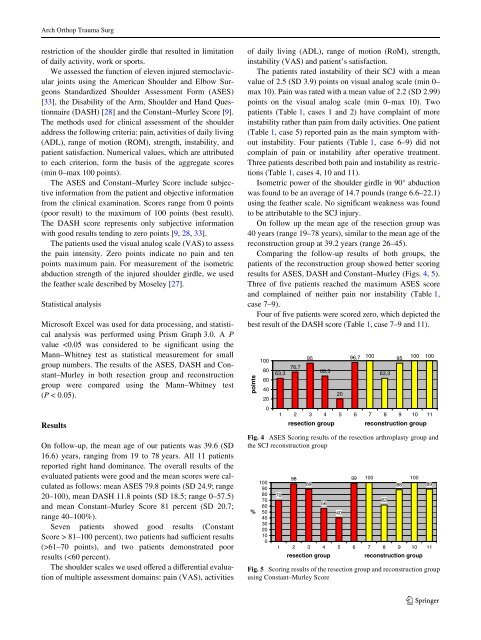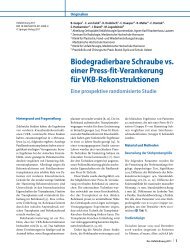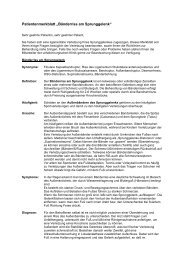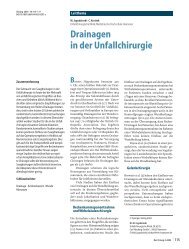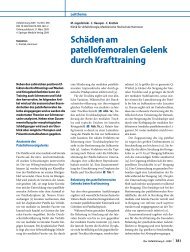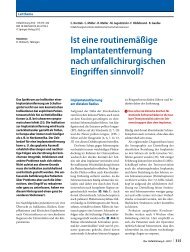Long-term outcome after joint reconstruction or ... - ResearchGate
Long-term outcome after joint reconstruction or ... - ResearchGate
Long-term outcome after joint reconstruction or ... - ResearchGate
Create successful ePaper yourself
Turn your PDF publications into a flip-book with our unique Google optimized e-Paper software.
Arch Orthop Trauma Surg<br />
restriction of the shoulder girdle that resulted in limitation<br />
of daily activity, w<strong>or</strong>k <strong>or</strong> sp<strong>or</strong>ts.<br />
We assessed the function of eleven injured sternoclavicular<br />
<strong>joint</strong>s using the American Shoulder and Elbow Surgeons<br />
Standardized Shoulder Assessment F<strong>or</strong>m (ASES)<br />
[33], the Disability of the Arm, Shoulder and Hand Questionnaire<br />
(DASH) [28] and the Constant–Murley Sc<strong>or</strong>e [9].<br />
The methods used f<strong>or</strong> clinical assessment of the shoulder<br />
address the following criteria: pain, activities of daily living<br />
(ADL), range of motion (ROM), strength, instability, and<br />
patient satisfaction. Numerical values, which are attributed<br />
to each criterion, f<strong>or</strong>m the basis of the aggregate sc<strong>or</strong>es<br />
(min 0–max 100 points).<br />
The ASES and Constant–Murley Sc<strong>or</strong>e include subjective<br />
inf<strong>or</strong>mation from the patient and objective inf<strong>or</strong>mation<br />
from the clinical examination. Sc<strong>or</strong>es range from 0 points<br />
(po<strong>or</strong> result) to the maximum of 100 points (best result).<br />
The DASH sc<strong>or</strong>e represents only subjective inf<strong>or</strong>mation<br />
with good results tending to zero points [9, 28, 33].<br />
The patients used the visual analog scale (VAS) to assess<br />
the pain intensity. Zero points indicate no pain and ten<br />
points maximum pain. F<strong>or</strong> measurement of the isometric<br />
abduction strength of the injured shoulder girdle, we used<br />
the feather scale described by Moseley [27].<br />
Statistical analysis<br />
Microsoft Excel was used f<strong>or</strong> data processing, and statistical<br />
analysis was perf<strong>or</strong>med using Prism Graph 3.0. A P<br />
value 61–70 points), and two patients demonstrated po<strong>or</strong><br />
results (


